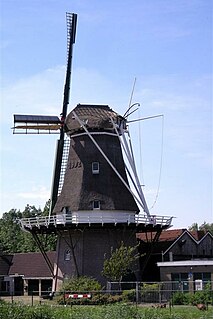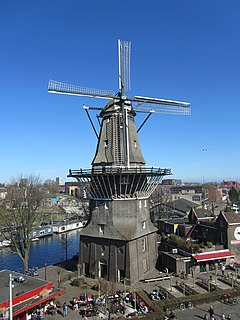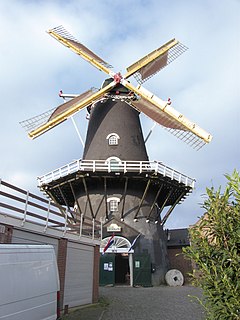| De Hegeman | |
|---|---|
 | |
| Origin | |
| Mill location | Dijkerhoek, Rijssen-Holten, Overijssel, Netherlands |
| Coordinates | 52°16′47″N6°21′04″E / 52.279759°N 6.351066°E Coordinates: 52°16′47″N6°21′04″E / 52.279759°N 6.351066°E |
| Year built | 1890 |
| Information | |
| Purpose | Gristmill, |
| Type | Smock mill |
| Smock sides | Eight sides |
| No. of sails | Four sails |
| Type of sails | Patent sails |
| No. of pairs of millstones | two pairs |
| Other information | Rijksmonument number 22218 |
De Hegeman is a smock mill operating as a gristmill in the community of Dijkerhoek in the municipality of Rijssen-Holten, Overijssel, in the eastern Netherlands. The mill was built in 1890 using an eight-sided top structure salvaged from a demolished mill in South Holland. It is a rijksmonument (Dutch National heritage site).

The smock mill is a type of windmill that consists of a sloping, horizontally weatherboarded or thatched tower, usually with six or eight sides. It is topped with a roof or cap that rotates to bring the sails into the wind. This type of windmill got its name from its resemblance to smocks worn by farmers in an earlier period.
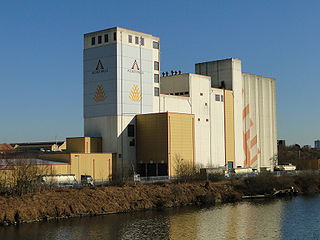
A gristmill grinds cereal grain into flour and middlings. The term can refer to both the grinding mechanism and the building that holds it.

Rijssen-Holten is a municipality in the eastern Netherlands, in the province of Overijssel.
The construction was commissioned by the widow Klein Baltink-Willemsen, living at the home of Erve Hegeman, after whom the mill was named in 1983. The decline in the use of wind power after World War II lead to a sharp deterioration of the state of the mill. The sail cross was removed for safety reasons, and it was only in 1965 that the mill was restored with the support of the then municipality of Holten. Decline struck again, however, after the mill was transferred from a cooperative to a private individual. In 1978 the municipality of Holten decided to purchase the mill and a second restoration followed in 1981–1982.

World War II, also known as the Second World War, was a global war that lasted from 1939 to 1945. The vast majority of the world's countries—including all the great powers—eventually formed two opposing military alliances: the Allies and the Axis. A state of total war emerged, directly involving more than 100 million people from over 30 countries. The major participants threw their entire economic, industrial, and scientific capabilities behind the war effort, blurring the distinction between civilian and military resources. World War II was the deadliest conflict in human history, marked by 50 to 85 million fatalities, most of whom were civilians in the Soviet Union and China. It included massacres, the genocide of the Holocaust, strategic bombing, premeditated death from starvation and disease, and the only use of nuclear weapons in war.
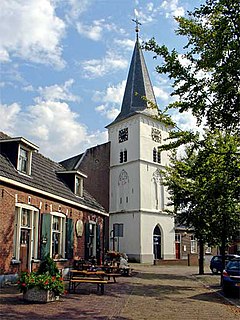
Holten is a small village in the municipality of Rijssen-Holten in the Dutch province of Overijssel, with approximately 10,000 inhabitants. Holten is located in a forested area just south of the Holterberg, a 65-metre (210 ft) hill, and is part of the "Sallandse Heuvelrug" National Park. The National Park is the only area in the Netherlands in which the black grouse can be found. This grouse population is on the brink of extinction, so parts of the National Park are closed to the public during its breeding season.
The mill is now equipped with two pairs of millstones: one pair uses wind power; the other one is powered by a Deutz engine. The arms are 22.40 metres (73 ft 6 in) long and are equipped with the Old Dutch fencing with sails.

Deutz AG is an internal combustion engine manufacturer, based in Porz, Cologne, Germany.
The mill is operated by volunteers and is used regularly to grind grain; one can purchase items produced in the mill on-site.





